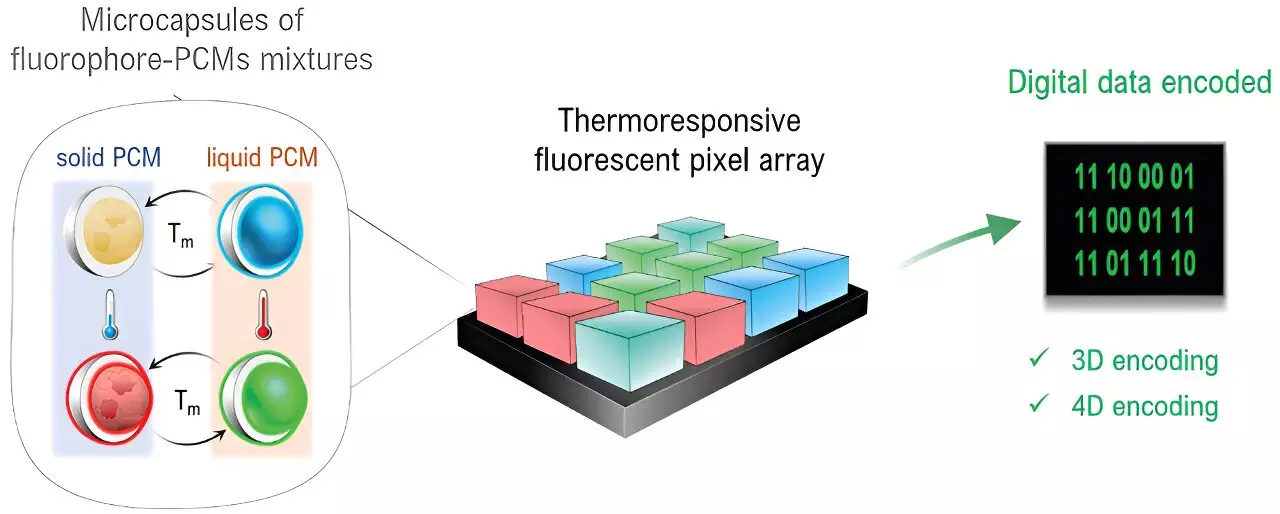A collaborative team of researchers has unveiled an inventive data encoding and storage solution that stands to transform the landscape of digital security and data management. This groundbreaking innovation marries microcapsules filled with luminescent dyes and phase-change materials, presenting a dual-purpose approach that seeks to enhance encryption methods used across varied applications such as cybersecurity and anti-counterfeiting. The research, led by Dr. Claudio Roscini and Prof. Daniel Ruiz-Molina from the ICN2 Nanostructured Functional Materials Group, is a product of a partnership with experts from the Autonomous University of Barcelona, namely Prof. Jordi Hernando and Dr. Jaume Ramón Otaegui. Their findings were documented in a recent publication in *Advanced Functional Materials*.
At the heart of this new encoding system is a sophisticated pixel mechanism engineered from a blend of fluorescent dyes and phase-change materials, such as paraffins. These phase-change materials are known for their thermal properties, specifically their ability to absorb and release heat in reaction to temperature variations. The researchers ingeniously leveraged these materials’ phase transitions to encode data by interpreting the varying light emissions correlated with temperature changes. In essence, as the temperature fluctuates or an electric voltage is applied, the microcapsules’ emitted colors alter, facilitating data encoding through a visually discernible medium.
This innovative pixel system breaks ground with its ability to execute intricate encoding operations classified into three-dimensional (3D) encryption and four-dimensional (4D) data storage. The methodology for 3D encoding incorporates two spatial dimensions like traditional QR codes, while the colors emitted by the pixel system add a third dimension. The additional fourth dimension is represented by the material’s response to ambient temperature, allowing for dynamic data interaction that enhances security measures. This multi-dimensional encoding strategy not only boosts data complexity but also creates a framework that is richer and more secure than current standards.
The implications of this research extend far beyond the academic realm, holding promise for practical applications in fields ranging from anti-counterfeiting measures to high-density data storage solutions. The combination of high efficiency and low-cost production presents an alluring prospect to industries grappling with the challenges of securing sensitive information and storing large volumes of data. With this technology, enterprises will potentially have access to mechanisms that not only provide robust security features but also optimize data management processes, a dual advantage that is becoming increasingly vital in the digital age.
The new digital encoding and storage system harnesses advanced materials science to promote innovative security solutions. The collaboration between leading researchers underlines the multidisciplinary approach necessary to tackle the complexities of data encoding today. As applications for this technology expand, it heralds a future where data can be both securely protected and efficiently stored, thereby revolutionizing practices across industries reliant on data integrity and security. This remarkable advancement waves a signal to other innovators and researchers that the potential to reshape information technology is not just an aspiration but a tangible reality.

